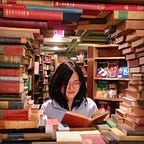The Color History of Lego bricks
With data spanning almost 7 decades of Lego parts and sets, today I want to piece together the color history for one of the biggest toy-makers.
How Lego Colors Evolve
It all started with a handful of hues: white, red, yellow, orange, blue, green, then new colors added, and new sets created.
Two interesting things happened in 1990s:
- The number of new colors started to grow exponentially
- Pink/purple hues began to appear. It may have something to do with Lego’s business strategy and as Lego wants to build stronger ties with girls’ market. It’s also said since 1970s Lego already started to target girls with dollhouse pieces.
In year 2005, the number of colors reached it’s apex of 91 and then scaled back.
Colors of Top Lego Sets and Themes
How about the color of Lego sets, instead of all the individual bricks?
Among 20 sets with most pieces (ranging from about 3000 to 6000 pieces), we can see a good portion of neutral colors like gray and white. Perhaps that prevents jarring colors in finished product.
We then look at themes with most number of unique sets.
Clikits theme stands out with highest proportion of pinks and turns out it is a theme running from 2003 to 2006 targeted at girls.
Though there are many algorithms to sort colors, a relatively simple one that produces decent results is to transform HEX (hexadecimal representation of red, green and blue) to RGB space and then to HSV colorspace:
- hue (the tone of color: red, yellow, green, blue, purple, etc)
- saturation (how grey the color is)
- value (how bright the color is)
These can be achieved through toRGB and rgb2hsv function, and by sorting the hue we can obtain the spectrum of color.
This is #day59 of my #100dayprojects on data science and visual storytelling. Full code on my github. Thanks for reading. Suggestions of new topics and feedbacks are always welcomed.
